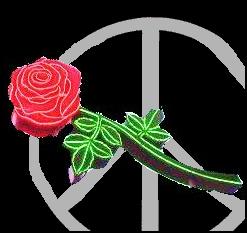|
Firemen Radio Transmissions Just Released
Ommission by the 911 Commission ...... The Question is Why?
Reports now released in 8-2005 show coverup or neglect?
Watch this FOX news interview, where Victims say....
"They Don't Trust The Report"
look for the tab in the
framed box that says VIDEO
then look for the title
The Fires
The Twin Towers' Fires and Their Possible
Effects
|
|
|
The
South
Tower's
fires burned hot enough at produce visible flames and light smoke (photograph) until the jet fuel burned off less than ten minutes after the crash. Thereafter the fires dwindled and the smoke darkened.
When it collapsd 56 minutes after the crash, the invisible fires were emitting only a thin veil of black smoke. |
Much was made of the severity of the fires in the Twin
Towers, since fires were invoked to explain failures they had never before caused.
Some reports compared the heat produced by the fires to that of nuclear power plants. In fact
the fires were not as severe as many other highrise fires, none of which caused the buildings to collapse. Furthermore, the fires became less severe over time, at least in the South Tower,
whose smoke became thin and nearly black by the time it collapsed.
Fire-induced column failure collapse theories assume scenarios in which fires
consume entire floors and burn for extended periods at temperatures of over 800º C. There are several problems with such
scenarios.
- 800º C is near the maximum flame temperature of hydrocarbons
burning in air without pre-heating or pressurization of the air. Even those temperatures are usually reached only with premixed
(blue) flames, such as in gas stoves and blowtorches. Diffuse flames, of the type in the WTC, tend to be far cooler.
- Widespread fires reaching 700º C would have
caused extensive window breakage and would have made the steel glow red-hot. No such events were observed. 1
- Fires would have to be very extensive to raise the
temperatures of columns to near the fire temperatures, given the thermal sinks of the steel structures. Columns of the perimeter
walls and of the core structures were well coupled thermally. In order to soften columns, fires would have to exceed the capacity
of the 100,000 tons of steel in each building to draw away the heat. In fact the fires did not even consume entire floors
of either tower.
- Heating the external columns would be especially difficult
because the columns were situated outside the interior volume, with only one of the four sides adjacent to the building's
interior.
- Heating of core columns would be especially difficult
given the apparently poor ventilation of the core regions, being further from any air supply.
- As the jet fuel burned off and the fires became less
severe, the columns would have cooled and regained most strength lost to elevated temperatures.
Even if such hot and widespread
fires existed, they would still be unlikely to cause failures of the columns in either of the towers.
The incompatibility of any fire-triggered column-failure scenario with the observed
characteristics of the fires created the need for the truss theory.
References
1. Metal Temperature by Color, processassociates.com, [cached]
|
|
excellent information here at --> 911research **********************************************
911 was a Lie
website has some engineering proof
|

